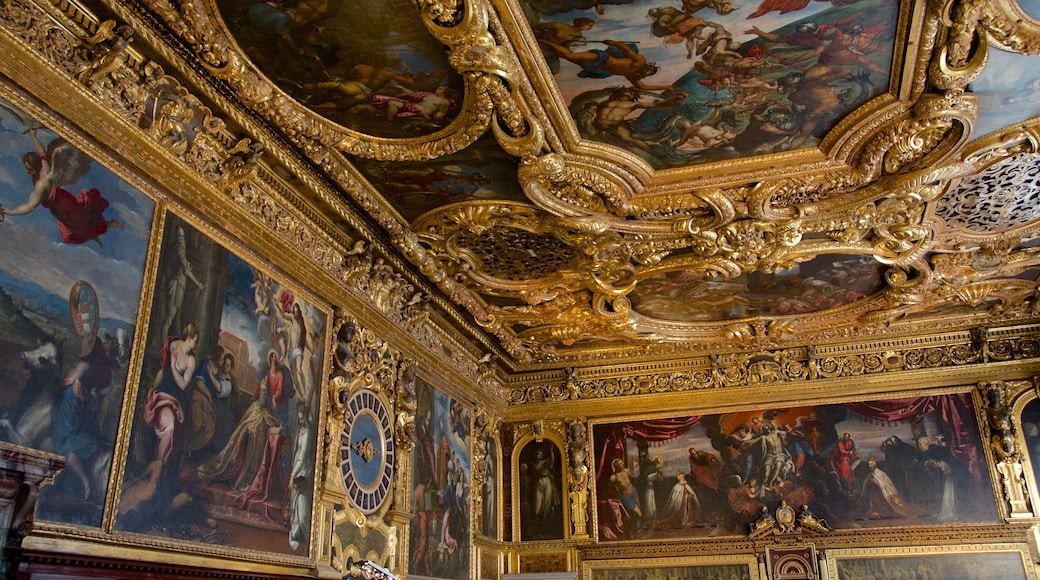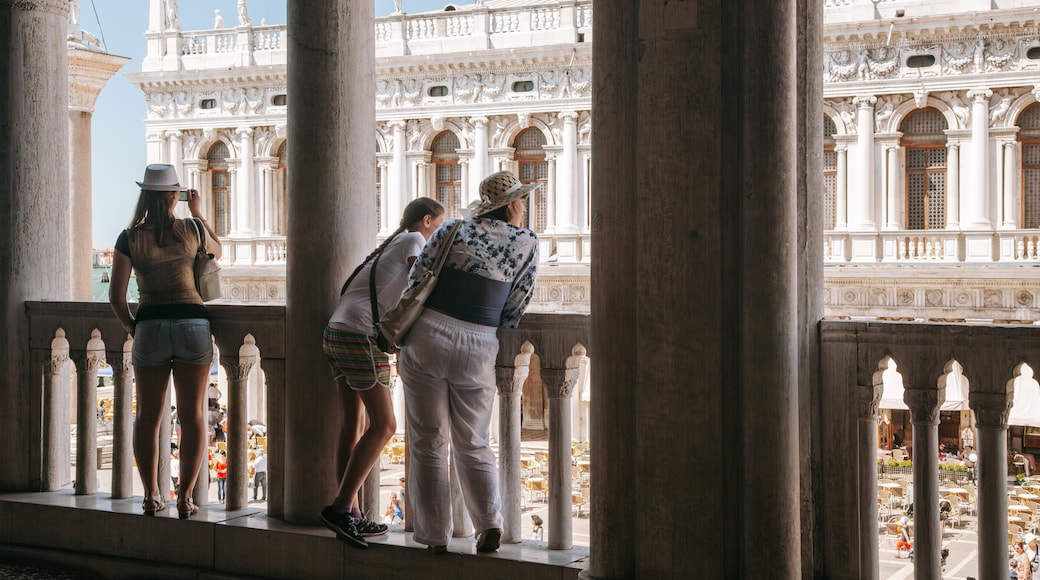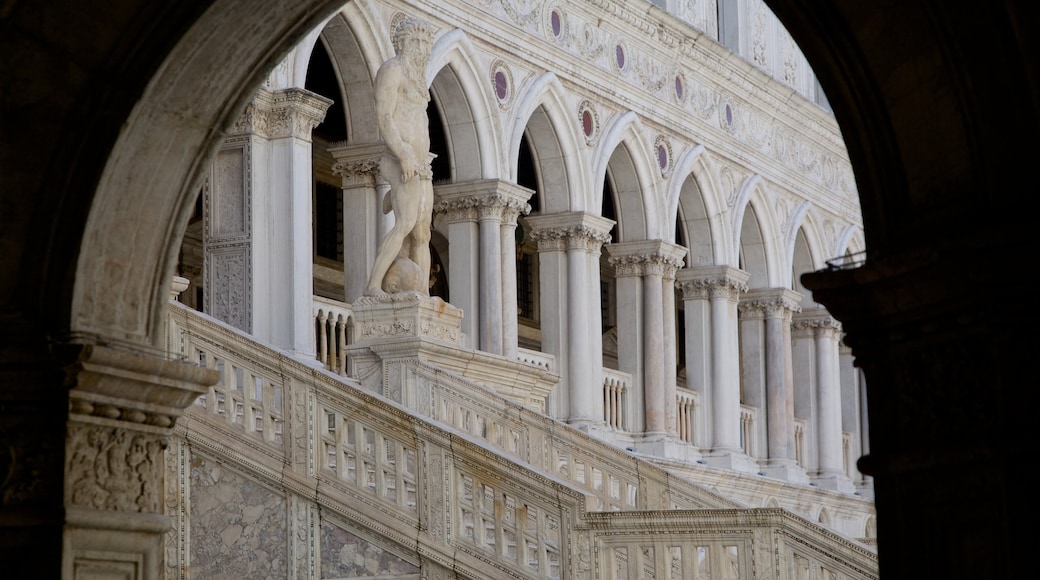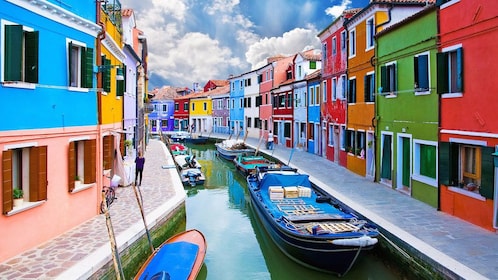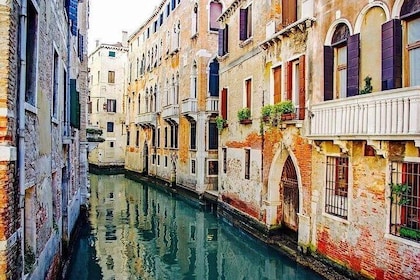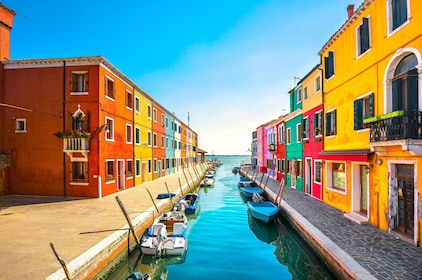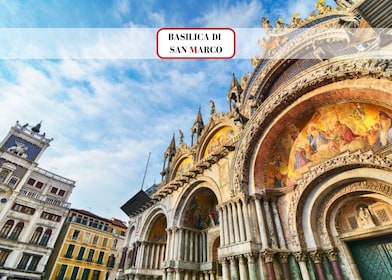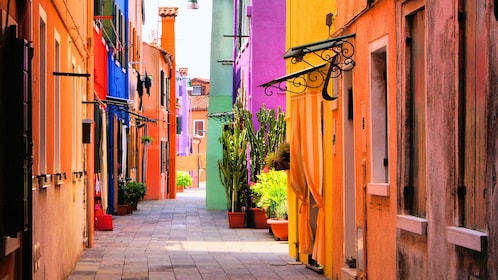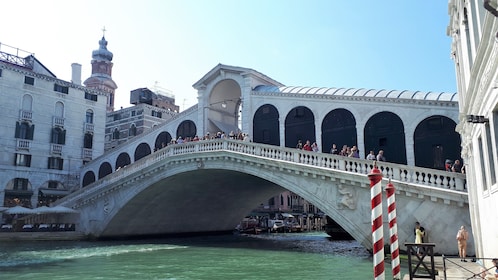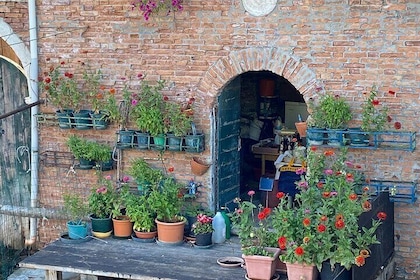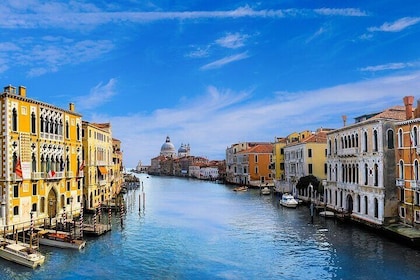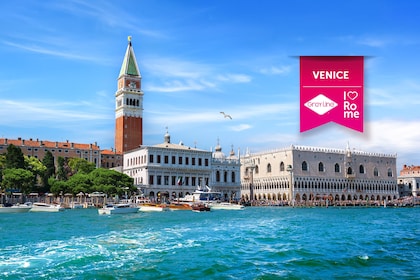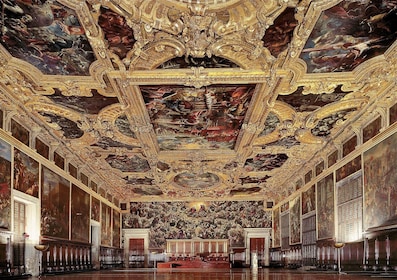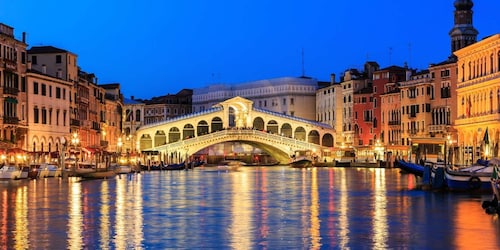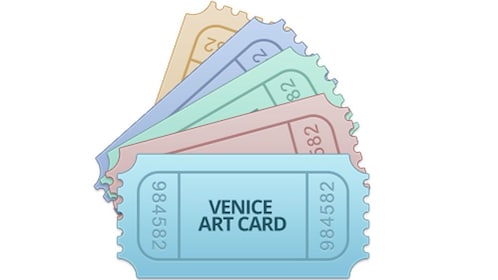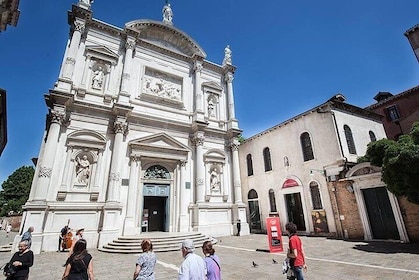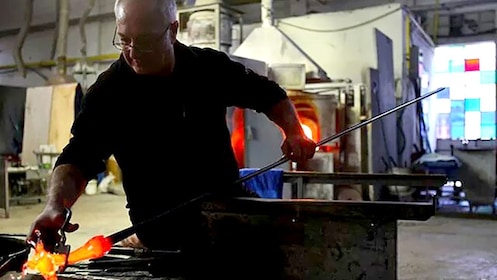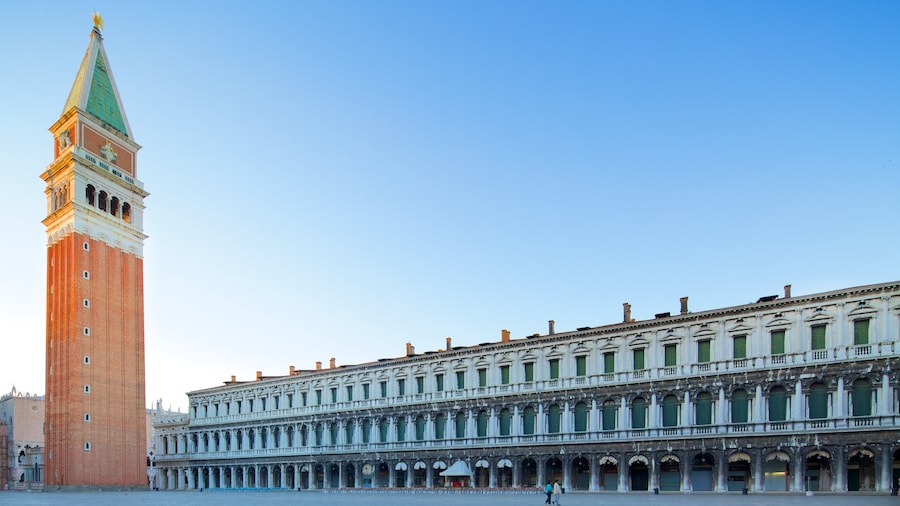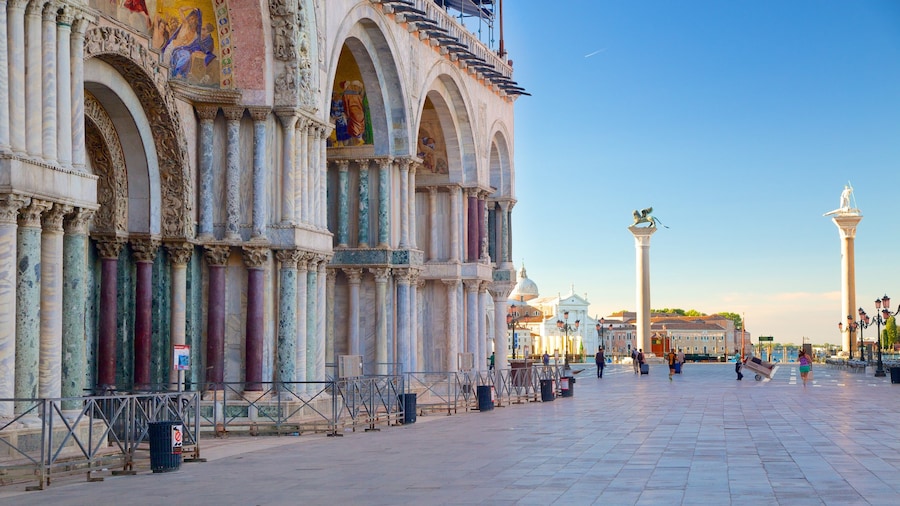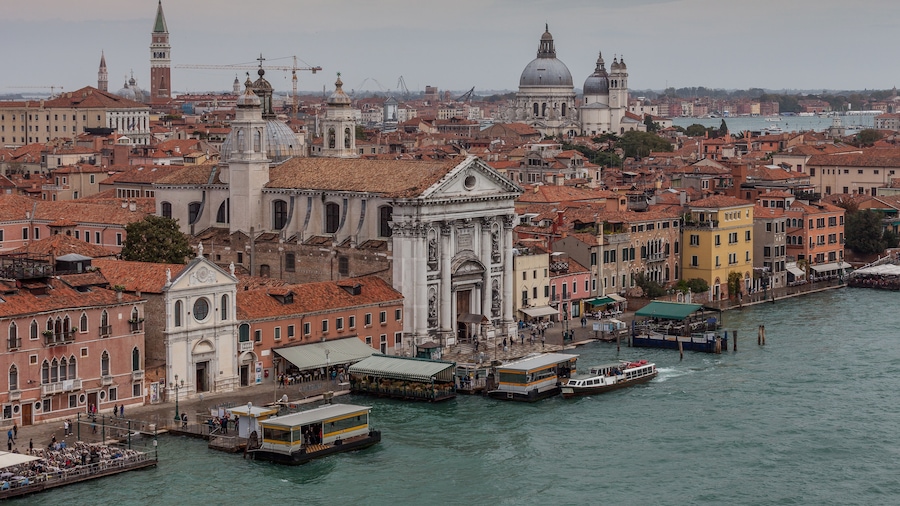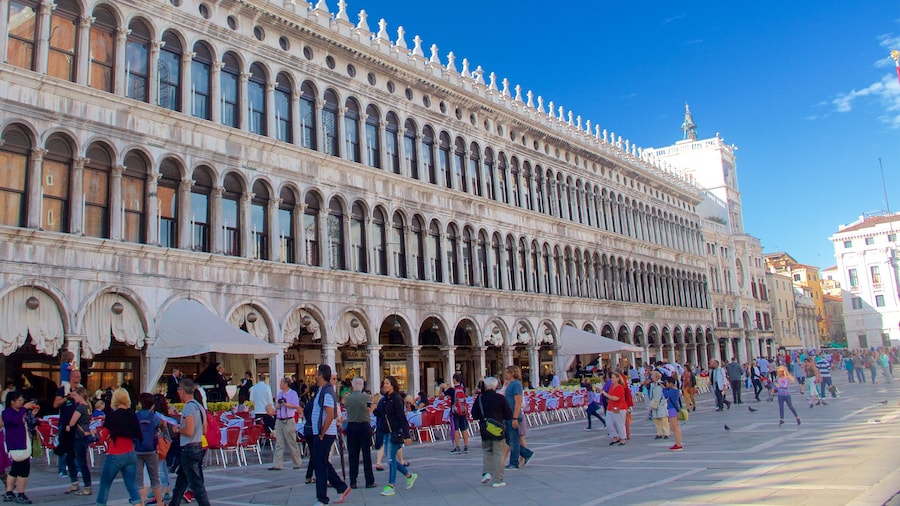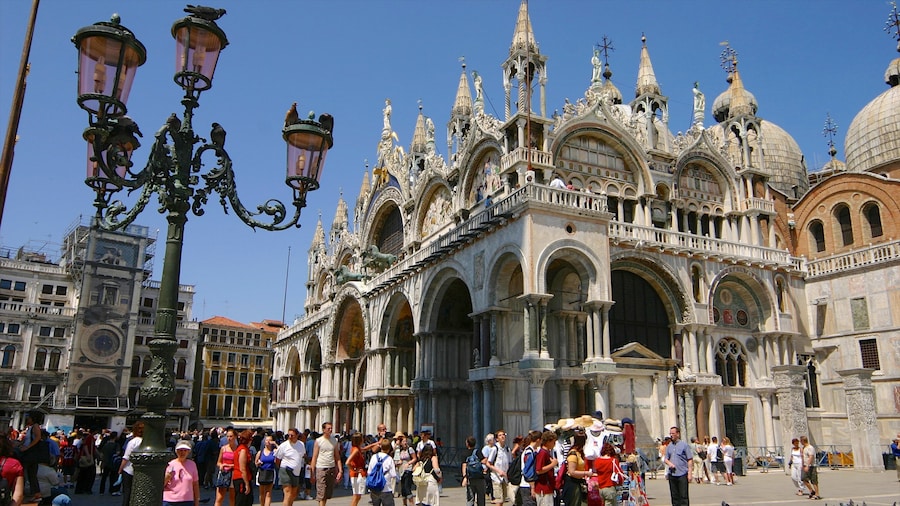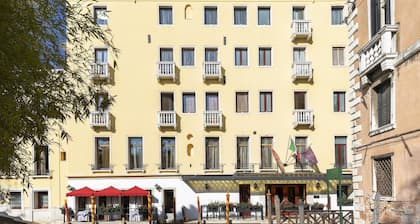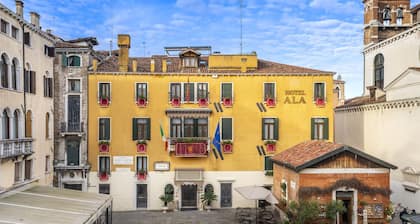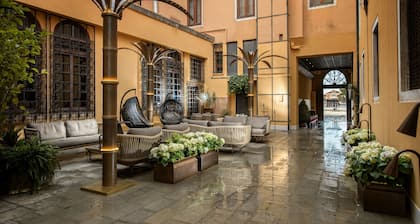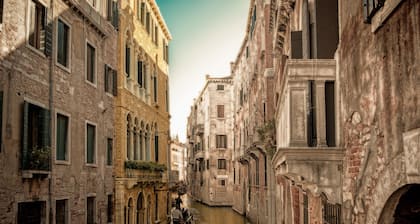Immediately recognisable for its pink marble façade, Doge’s Palace (Palazzo Ducale in Italian) stands tall and proud in the midst of St. Mark’s Square. With its arched loggias and its militaristic crenellations, the palace struck awe and not a little fear into the hearts of the visitors who arrived in Venice by sea over hundreds of years in former times.
When you first arrive, head for the courtyard where you’ll be greeted by the great statues of Roman gods Mars and Neptune looking over you from the broad steps of the Giant’s Staircase.
Then once you’ve seen the interiors of the palace you’ll be amazed by the luxury in which the city’s former rulers once lived. Venice was run by a system of elected doges for over 1000 years until the 18th century, and it is from this building where they presided over what was dubbed the Serene Republic. The frescoes, artworks and fireplaces, as well as the exquisitely carved wooden ceilings, are all testament to the cultural might of the Venice of old.
Throughout the palace you’ll find impressive rooms, from the fine apartments of state through to the imposing Hall of the Great Council where you’ll find Tintoretto’s grand Paradise hanging behind the throne. More works by Tintoretto can be found on the walls throughout the Institutional Chambers.
Head for the prison cell where the famous Casanova was once detained, which is linked to Doge’s Palace by the Bridge of Sighs. The bridge’s name comes from the fact that this was where prison inmates took their last breath before they were put in their cell inside.
The palace is open to visitors every day, with longer opening times during the summer months. You can grab an audio guide when you arrive or book onto the museum’s Secret Itineraries tour for a closer look round the palace, including rooms not normally open to the general public. The museum’s café overlooks St Mark’s Square and is a great place to finish off your visit.
